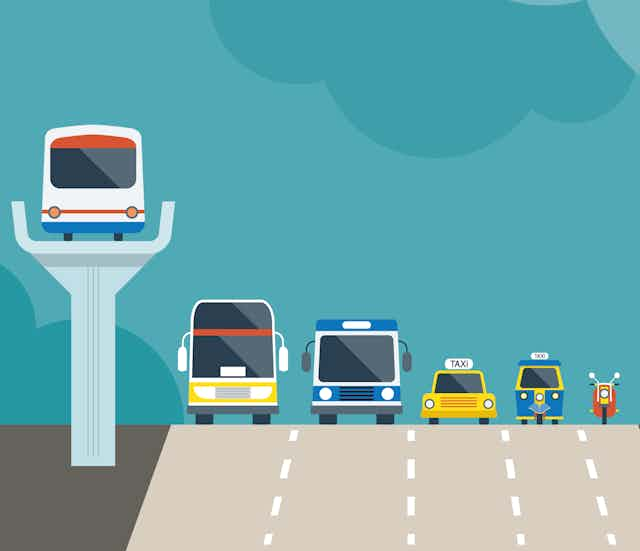We tend to assume that travel today is fundamentally different from what it was half a century ago. We have easier access to faster forms of transport, and we expect to be able to move quickly and easily whenever we wish. But a recent overview of travel behaviour in England – celebrating 50 years of data from the National Travel Survey (NTS) – shows that while some things have certainly changed, much remains the same.
According to the authors of the report, the most striking change to our travel habits is that “we are travelling further but not more often”. In other words, though the individual trips we take are longer in terms of distance, the number of times we travel has remained much the same over the past 50 years. What’s more, there has been little change in the total time spent travelling, due to faster travel speeds. And the purposes of our trips have changed only slightly: the biggest change has been an increase in the number of journeys we take to escort others.
Predictably, we’ve seen an increase in car use, as a result of their greater availability and affordability. This has been accompanied by a decrease in travel by bus and bike. None of these trends will be surprising to anyone who has thought carefully about the nature of everyday travel in Britain. But if we dig behind the survey data, some less obvious patterns and trends are revealed.
What’s missing?
Although the NTS is an unparalleled set of data, even this has its limitations. As the authors recognise, walking trips tend to be under-recorded, and it is not possible to gain fully comparable data on walking as a means of everyday travel over the full 50 years. What is clear, however, is that our feet remain one of our most important forms of transport.
In 2014, according to the survey, 22% of all trips were made on foot, and walking constituted 76% of all trips under one mile. Though we walk less than we did in the past, travel on foot remains an important means of travel – but one that tends to be neglected in both official statistics and transport planning. All too often, the needs of the pedestrian are ignored.

And while there may not be data available beyond the 50 years covered by the NTS, it is possible to gain some insights into even longer-term travel trends by using oral history and survey techniques. Research using these methods suggests that the distance and time spent travelling has remained reasonably stable over the last century, and perhaps beyond.
Historically, most trips were over short distances, and the time that people have been willing to commit to travelling has remained much the same. Obviously faster forms of transport, especially the private car, have allowed longer distances to be covered, and there are more very long journeys than in the past, but for most people, most of the time, everyday travel takes place relatively close to home.
Home, sweet home
Why have travel trends remained so similar over long periods of time? Answers to this question almost certainly lie in the nature of society and human relationships: something that cannot be revealed by statistics. In essence, human societies across the ages seek to fulfil certain aspirations: to provide income, food and shelter; to be near and protect family; to socialise and to be with friends. Most of these needs and aspirations can be met close to home, and therefore shape our travel behaviour.
Certainly, as families have become more dispersed and labour mobility has increased, this has led to some people making ever longer journeys. But most of us are still able (and indeed prefer) to fulfil most of our everyday needs close to home.
One other aspect that statistics such as the NTS cannot reveal is the experience of travel. What is it like to travel today and how has this changed over time? Arguably, this is one area where there has been significant change. The advent and widespread use of the private car has meant that comfortable, convenient and private transport has become the norm for most people.
A century ago, only an elite could travel privately and in relative comfort, with most using shared space on various forms of public transport. For those who walk or cycle, the experience of travel will have changed less, though increased traffic has probably made the experience less pleasurable for many.
Half a century of the NTS reminds us of the importance of travel in our lives, and challenges assumptions that everyday mobility has changed dramatically over time. But it also shows us that, when it comes to what’s important to us, some things never change.

